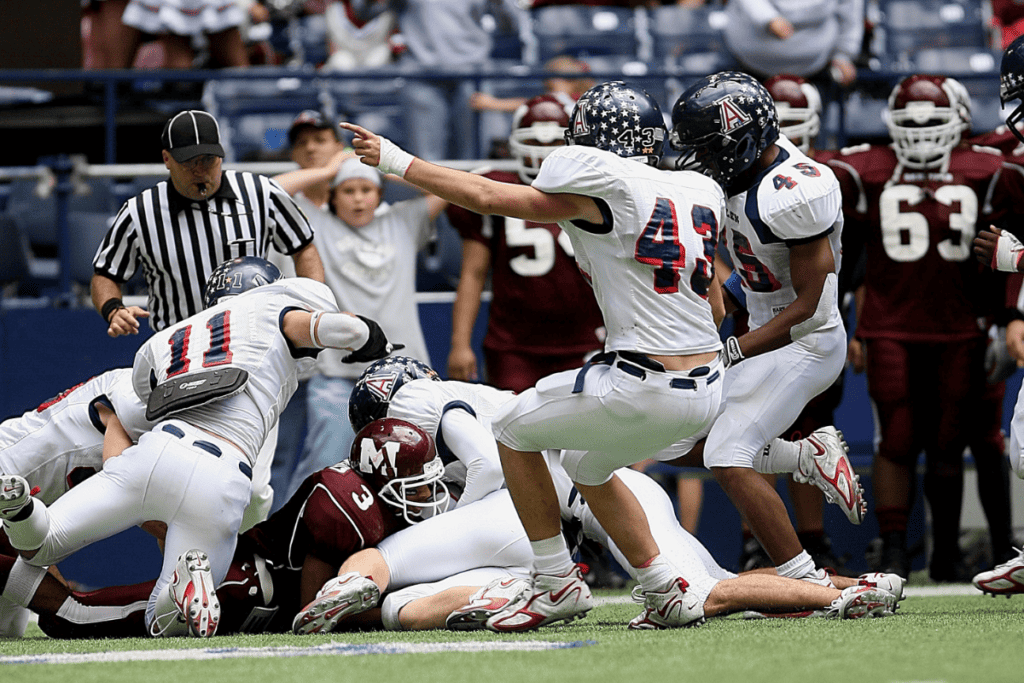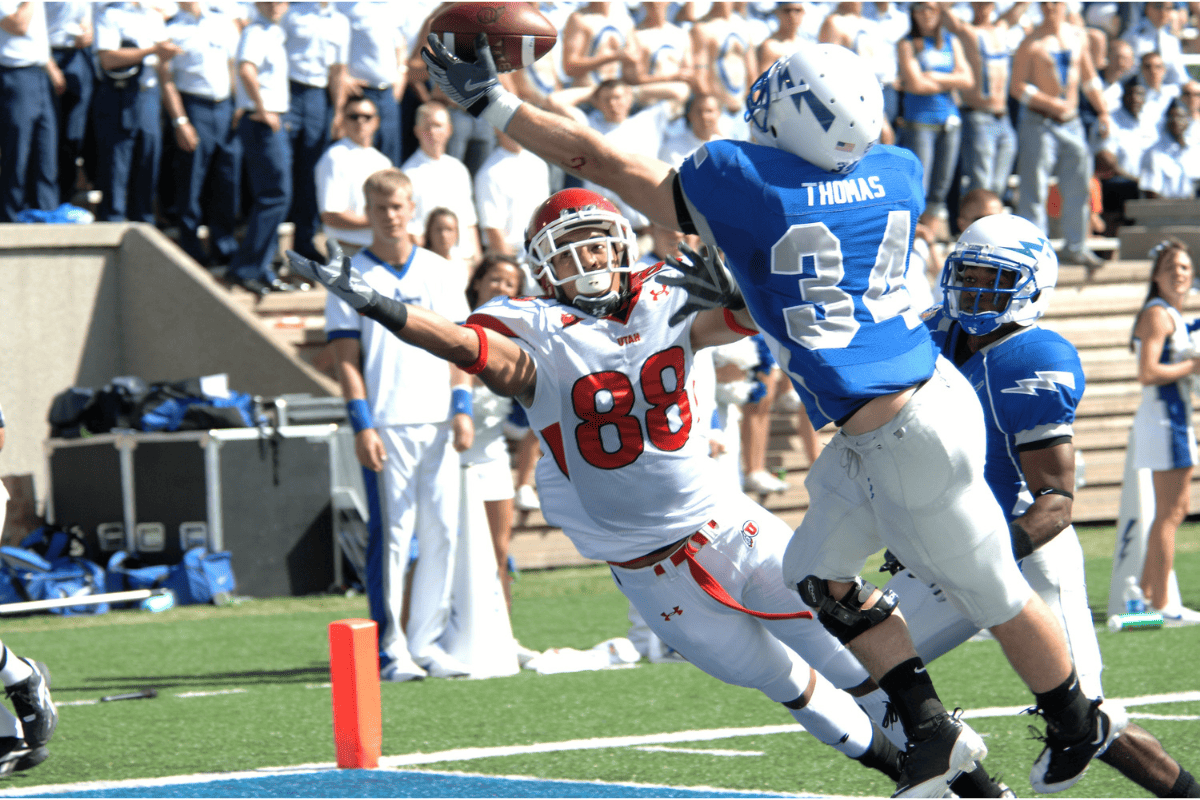Understanding Turnovers in Football: A Beginner’s Guide
Welcome to the exciting game of football, where every play can be a game-changer and every decision counts! Today, we’re diving into one of the most pivotal aspects of the game: turnovers.
In football, a turnover is when the team with possession of the ball loses it to the opposing team, often leading to dramatic shifts in the game’s momentum. Understanding turnovers is key to appreciating the strategies and skills at play in football.
There are two primary types of turnovers: interceptions and fumbles. Each has its unique characteristics and impact on the game.
So, buckle up as we explore these game-altering moments in detail!
The Different Types of Turnovers
Interceptions
- Definition and How They Occur: An interception happens when a defensive player catches a pass intended for an offensive player. Picture this: the quarterback throws the ball, aiming for his receiver, but a defensive back jumps into the scene, snagging the ball mid-air. That’s an interception – a mix of prediction, timing, and sheer athletic skill.
- Impact on the Game: Interceptions can be massive momentum shifters. They not only prevent the offense from scoring but also give the defensive team a chance to turn the tide, often leading to points on the board. In football, an interception is like a sudden plot twist in a thriller movie.
- Famous Examples: Remember the 2015 Super Bowl XLIX? Malcolm Butler’s interception at the goal line is a classic example. It shifted the victory from the Seattle Seahawks to the New England Patriots in the blink of an eye.
Fumbles

- Definition and How They Occur: A fumble occurs when the ball carrier loses possession before being downed or scoring. A fumble can happen because of a hard tackle, a mishandled handoff, or even a slip of grip.
- Recovery Process: After the ball is fumbled, it’s a free-for-all. Any player on either team can recover the ball. This often leads to chaotic and thrilling pile-ups, where sheer determination and alertness win the day.
- Impact on the Team’s Momentum: Fumbles can be demoralizing for the team that loses the ball, especially if they were on the cusp of scoring. For the recovering team, it’s an adrenaline shot, giving them an unexpected opportunity to take control.
- Notable Fumbles in Football History: The “Miracle at the Meadowlands” in 1978 is a prime example. With the New York Giants set to win, a fumble in the final seconds allowed the Philadelphia Eagles to score a touchdown and snatch victory from the jaws of defeat.
Strategies to Avoid Turnovers
For Quarterbacks
- Importance of Decision-Making: The quarterback is like the chief strategist in a battle. Making the right decision under pressure is crucial. A quarterback must quickly assess the defense, understand the risks of each throw, and sometimes choose to take a sack or throw the ball away rather than risk an interception.
- Tips on Reading Defenses: Mastering the art of reading defenses is like learning a complex, ever-changing language. Quarterbacks should study game films to recognize patterns and anticipate defensive moves. Practicing against different defensive schemes and learning to decipher blitzes and coverages can significantly reduce interception risks.
For Running Backs and Receivers
- Ball-Handling Techniques: Secure ball-handling is foundational. Running backs and receivers should practice gripping the ball tightly, with the tip tucked securely under the arm. Drills that simulate high-contact situations help in reinforcing these habits.
- Awareness on the Field: Spatial awareness is key. Being cognizant of defenders’ positions helps in anticipating tackles and avoiding hits that could jar the ball loose. It’s about having eyes on the back of your head and being prepared for the unexpected.
Defensive Strategies to Force Turnovers
For Defensive Backs
- Techniques for Effective Interceptions: It’s not just about catching the ball; it’s about being in the right place at the right time. Defensive backs need to master the art of reading quarterbacks’ eyes and understanding receiver routes. Practicing jumping routes and timing their leaps perfectly can turn a pass into a game-changing interception.
- Reading the Quarterback: This skill is akin to being a detective. Defensive backs should watch film to understand quarterbacks’ tendencies and tells. Recognizing patterns, such as how a quarterback looks off a safety or favors a particular receiver in tight situations, can provide crucial clues for an interception.
For Linebackers and Linemen
- Techniques for Causing Fumbles: The goal here is to disrupt. Tackling with an aim to strip the ball, using the ‘punch-out’ technique, or targeting the ball during a tackle are all effective strategies. It’s about striking a balance between a solid tackle and targeting the ball.
- Team Coordination and Communication: Football is a symphony of coordinated effort. Linemen and linebackers should communicate to create pressure, force hurried decisions, and exploit weaknesses in the offense. Coordination can lead to hurried throws or mishandled balls, ripe for turnovers.
The Psychological Impact of Turnovers
On the Team Committing the Turnover
Turnovers can be a psychological gut punch for the offending team. They not only lose possession but also face a sudden shift in morale.
This can lead to a loss of confidence in players, particularly if turnovers become frequent. Coaches often have to work hard to keep spirits up and ensure that one mistake doesn’t lead to a cascade of errors.
On the Opposing Team
For the team that capitalizes on a turnover, it’s a massive boost. It injects energy and confidence into the players and can shift the momentum of the game.
A well-timed turnover can turn an underdog into a fierce competitor, breathing life into their game plan.
On the Overall Game Momentum
Turnovers are game-changers, often dramatically altering the course of a match. They can halt a dominant team’s progress or rescue a struggling team from defeat.
The psychological impact of turnovers resonates not just through the teams but also among the fans, creating a palpable tension and excitement in the stadium.
Famous Turnovers in Football History
Football history is dotted with turnovers that have become almost legendary. Let’s look at a couple:
- Leon Lett’s Super Bowl Fumble (1993): In Super Bowl XXVII, Leon Lett of the Dallas Cowboys had a clear path to a touchdown after a fumble recovery but celebrated too early, allowing Don Beebe of the Buffalo Bills to knock the ball out of his hand.
- Brett Favre’s Interception in NFC Championship (2010): Favre, playing for the Minnesota Vikings, threw a late-game interception against the New Orleans Saints, a pivotal moment that led to the Saints’ victory and eventual Super Bowl win.
Conclusion
Turnovers in football are more than just a change in possession; they are pivotal moments that can define games, seasons, and even careers. They are the twists in the plot that make football the thrilling spectacle it is.
As fans and students of the game, appreciating the nuances of turnovers helps us understand the deep strategies and emotional highs and lows of this beloved sport.

